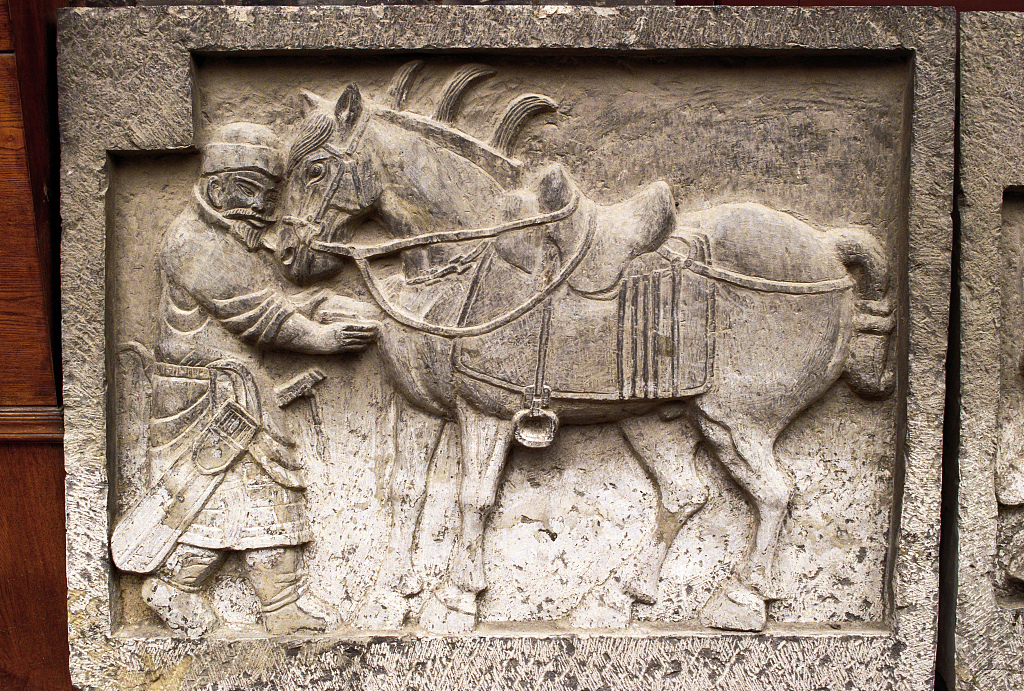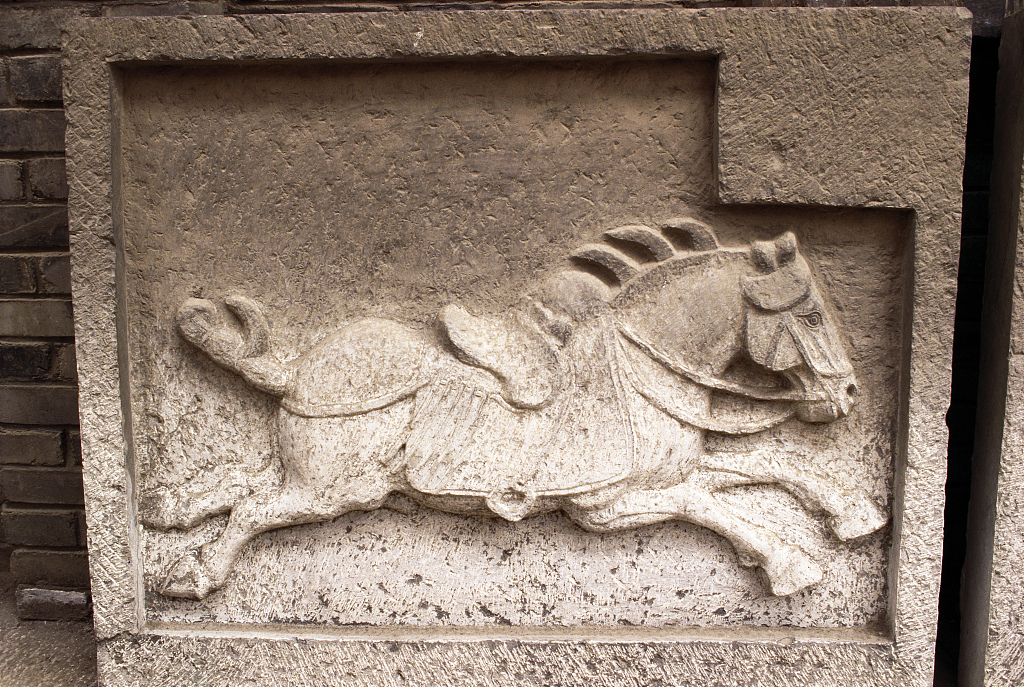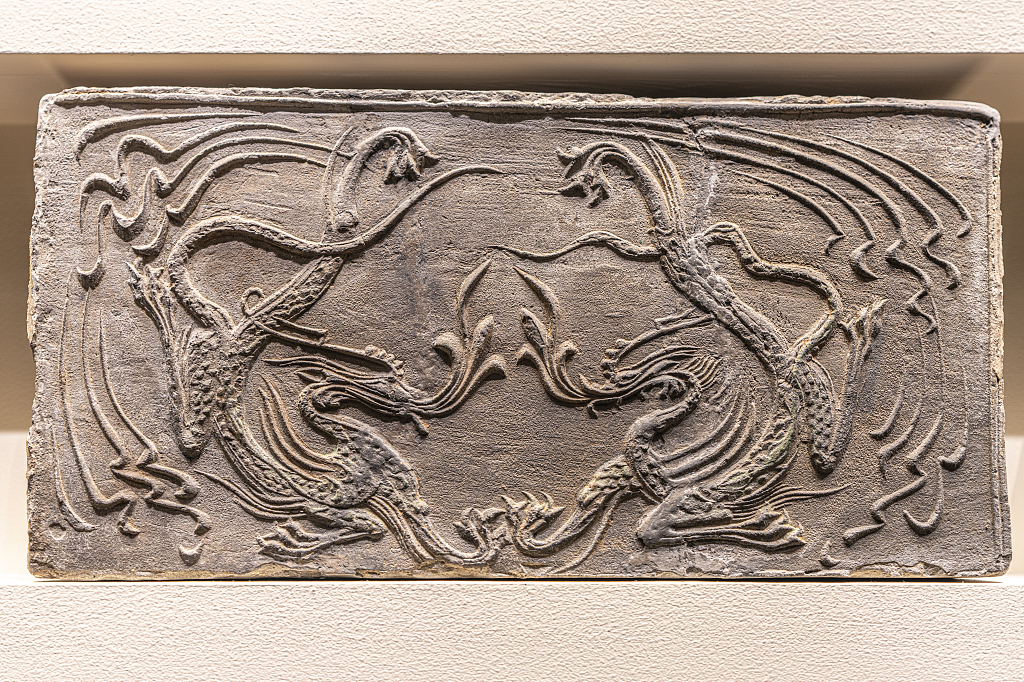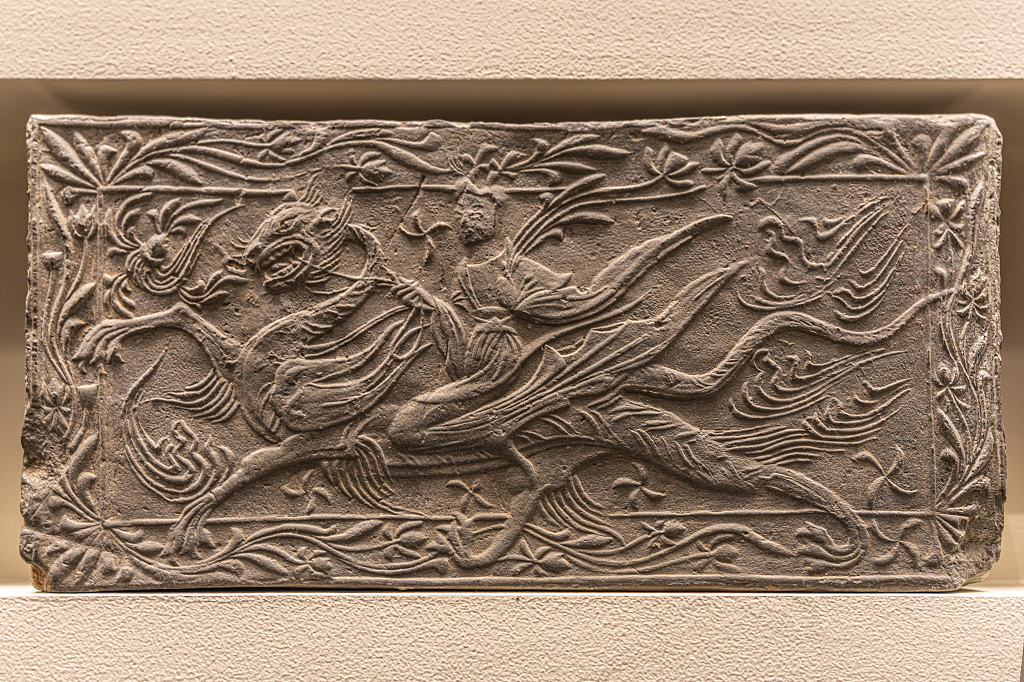
A section of Huaxiang stonework unearthed from the Zhao Mausoleum in Shaanxi Province, China /CFP
A section of Huaxiang stonework unearthed from the Zhao Mausoleum in Shaanxi Province, China /CFP

A section of Huaxiang stonework unearthed from the Zhao Mausoleum in Shaanxi Province, China /CFP
A section of Huaxiang stonework unearthed from the Zhao Mausoleum in Shaanxi Province, China /CFP

A section of Huaxiang stonework is displayed at the National Museum of China, Beijing. /CFP
A section of Huaxiang stonework is displayed at the National Museum of China, Beijing. /CFP

A section of Huaxiang stonework is displayed at the National Museum of China, Beijing. /CFP
A section of Huaxiang stonework is displayed at the National Museum of China, Beijing. /CFP
Stone relief portraits, or Huaxiang stone, were carved on the architectural components of underground tombs, grave temples, archways and other buildings during the Han (206-220) and Wei (220-265) dynasties.
They represent an exquisite form of stone carving art. Most of the buildings featuring Huaxiang stone belonged to funeral buildings, which were essentially sacrificial and funerary in nature. This makes Han Huaxiang stone essentially a sacrificial and funerary art form. Huaxiang stone is not only the pinnacle of classical Chinese art before the Han Dynasty, but it also has a profound influence on art following the Han Dynasty – where it occupies an important position in the history of Chinese art.